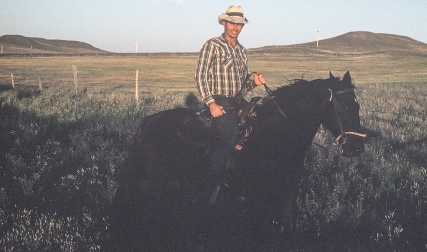As a former member of the College’s investment committee, Ruth says her decision to step into the chief investment officer role vacated by Pam Peedin ’89 was made easier by knowing the strong state of the College’s portfolio (although the endowment declined slightly in 2016, it is up 8.8 percent during the past 10 years). Ruth comes to the College having served in philanthropic wealth management positions for the foundations of billionaires Gordon Moore and Michael Bloomberg. Here she talks about her confidence in her investment team and how she will operate.
What is the mission of Dartmouth’s investment office?
Our portfolio objective is to achieve the highest risk-adjusted returns we prudently can generate to support the institution. The strategy that has been in place, which I will continue to lead, is to have a globally diversified, equity-oriented portfolio. These investments are intended to outperform over the long term. At times we will own investments that are not equity yet have equity-like returns.
What else can you tell us about the College portfolio?
The portfolio is global in nature. It doesn’t have to be. We don’t want to check every box, though the team believes there are opportunities outside of the United States. For example, two of the senior directors were recently in Asia, doing research on investments there. We also travel extensively in the United States and other parts of the world.
How do you view the long term vs. the short term?
A guiding principle is to think long term, and we generally want to partner with investment managers who have a longer-term mindset. We also value managers who are truly aligned. Usually they invest a meaningful amount of their personal capital in the strategy, and we prefer they run only one strategy. They excel at a certain strategy and don’t try to do lots of different things. Our preferred managers tend to be specialists and local sharpshooters. Often the best managers have the foresight to be contrarian. These specialists often find value in assets or companies that are unloved or not yet loved.
How does Dartmouth assess ideas for the portfolio?
Whenever the team finds a new idea, it is put up against the existing portfolio with the question: “Is this going to improve our situation over the long term? And, if so, what is at the bottom of our list in our conviction?” It’s an iterative process that’s perpetual. We are always trying to find new opportunities.
Are there measurements of success beyond the endowment return rate, which gets so much attention each year?
A central qualifier to evaluating endowment returns is an appropriately long timeframe. For Dartmouth’s endowment, a year is not a measure of success or failure. There is volatility in the markets, which can produce one-year results that might look impressive. That said, what really matters is what happens over five, 10, 15 years. Those numbers are far more important.
With regard to market volatility, is there any concern rooted in today’s political climate, for example, that makes you think, “Uh-oh. This isn’t going to be good for us,” or do you stick to the longer-term view?
We certainly think about it, but it doesn’t mean the strategy is to avoid risk. Dartmouth needs a portfolio that sees through volatility and sometimes uses volatility as its friend to generate more ideas. We don’t trade around geopolitical events, but we are mindful of them, particularly in evaluating new opportunities and evaluating performance of investments in the portfolio. The same is true of the business cycle. For example, we’re seven years into an economic expansion. It’s likely that, at some point, we’re going to have a recession. This external context is helpful as the Dartmouth investment team evaluates how the portfolio’s managers are performing.
Who makes the decisions? You or the investment committee?
I, along with the Dartmouth CIO team, work in conjunction with the investment committee, which is designated by the board of trustees. We collaboratively decide on an investment policy.
How often does the CIO meet with the investment committee?
There are four committee meetings a year, and during those meetings there is a comprehensive review of the portfolio. The committee’s role is, in collaboration with staff, to set policy and then to oversee that staff is executing on that plan. That was the role I was lucky enough to be in on the committee. And [former CIO] Pam Peedin did a great job of providing ample information so that the committee understood what the investment team was doing. As CIO now it is my role, in conjunction with staff, to provide information that enables the committee to continue to confirm the policy and to provide oversight for the portfolio.
Having served on the investment committee gives you a nice head start?
Being on a committee was very helpful. In the Dartmouth case, being on the committee made a world of difference because I knew what I was getting into. I also trusted Pam completely. That made it much easier to say “yes” to this job at the College, because I knew I would be leading a solid and functioning team and a solid portfolio. Additionally, as context, when I left my role as CIO at the Moore Foundation, the board asked me to stay on for six more years on its investment committee. I also serve on the investment committee at Deerfield Academy, at the U.S. ski team and at the McKinsey investment office. These opportunities have allowed me to see a couple of different strategies in play and that’s quite helpful.
Are there any constraints on investing based on institutional values?
I would refer you to President Hanlon’s office for an answer to that question. The one thing I would tell you is that we’re representing the College. We are always mindful of ethics. That is an underlying tenet of our investment policy.
What do you tell people who wonder why more of an institution’s endowment can’t be spent to bring down tuition? Setting the overall operational budget is the responsibility of the board of trustees. Setting tuition and other operating decisions, including the extent to which they draw on the endowment, are board decisions.
Can you talk about the differences between personal investing on a small scale and large-scale institutional investing such as you’re managing?
Investing on a large scale can allow more exposure to the best opportunities, though it takes a smart team that is proactive. For example, I mentioned that some of the staff was in Asia and that the team travels extensively. At the same time, some of the best values are found in less-visible, less-efficient parts of the market in the United States. Dartmouth’s size, about $5 billion, is a nice size. We’re big enough to afford the resources, but not into the tens of billions of dollars where it gets incrementally harder to generate ideas of enough scale to move the needle.
What keeps you awake at night?
Some of my greatest concerns also pique my curiosity. I’m curious to see how the U.S. economy and the legislative environment unfold over the next year and to see what happens in Europe. Our team is very interested in watching China evolve over the long term.




